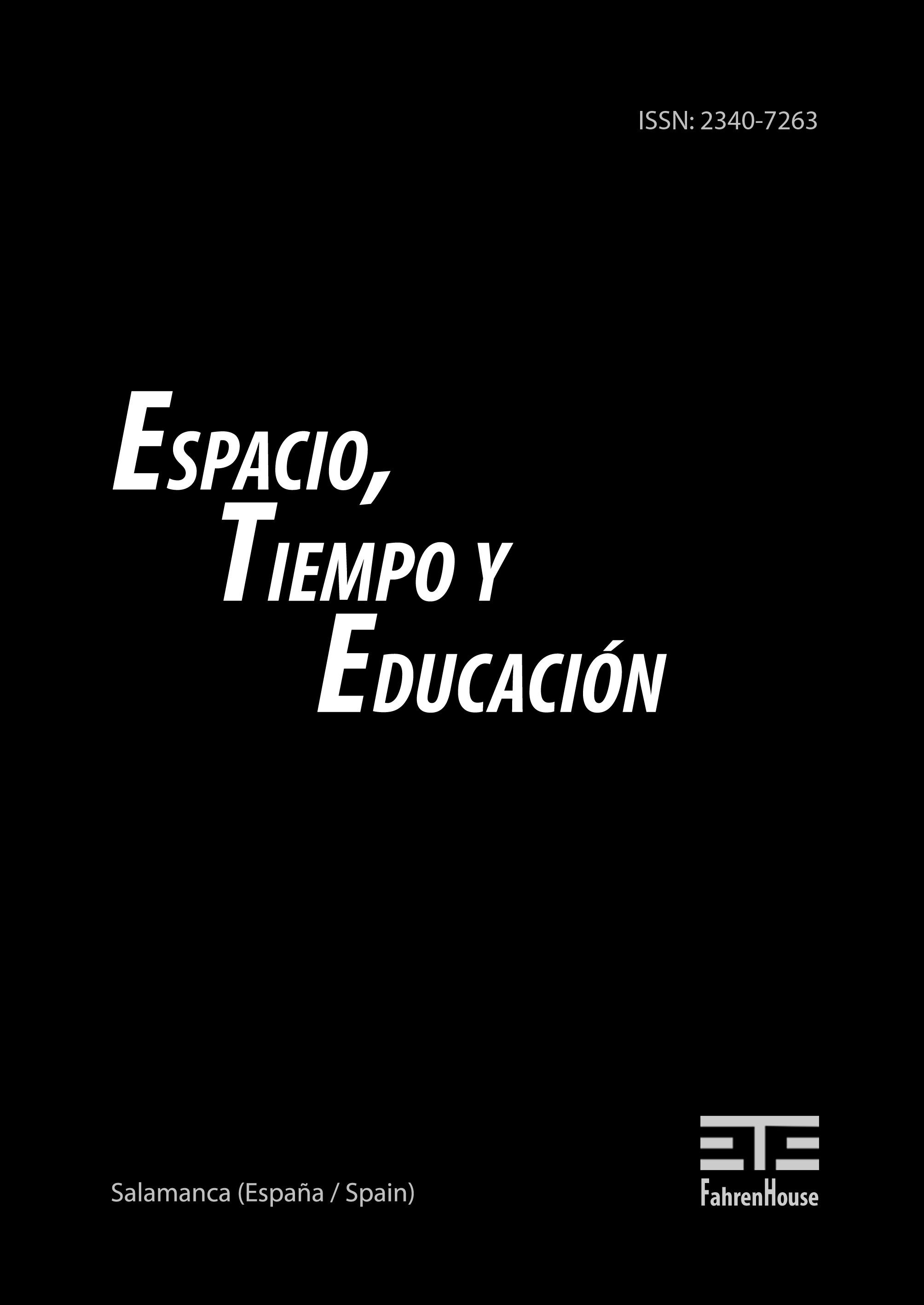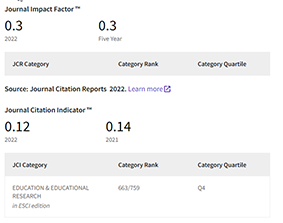The Technological Boom in Schools in the 80s: an Approximation to the Spanish ATENEA Programme
DOI:
https://doi.org/10.14516/ete.249Keywords:
Educational history, educational policy, curriculum, educational innovation, educational technologyAbstract
Aims: This paper aims to analyse the debate concerning the incorporation of Information and Communication Technologies (ICT) by the Spanish Educational System, specifically the background and development of the first state-sponsored experimental programme, the Atenea project (1985-1992). Methodology and sources: To this end, we performed a review of documents pertaining to the programme and its evaluation, also taking into account the debates it generated. These documents were supplemented by reports and evaluations on related programmes, the conclusions of which we analyse in comparison with some of the contemporary reports, such as the one published by the OECD in 2015. Conclusions: Some of the fundamental debates that arose as a result of these programmes promoting the use of computers, in particular the Atenea, are strikingly valid but still lack a clear response. In the case of the promotion of ICT as an educational tool, we must recognize the relevance of corporate and business interests that saw the Education System as a large market, and therefore encouraged this type of programme, favouring an application focused more on the instrumental level than on the pedagogical one.
References
Apple, M. (1991). The new technology: is it part of the solution or part of the problem in Education? Computers in the Schools, 8, 59-82. Doi: 10.1300/J025v0801_07
Area, M. (2006). Veinte años de políticas institucionales para incorporar las TIC al sistema escolar. En Sancho, J. M. (Ed.), Tecnologías para transformar la educación (pp. 199-232). Madrid: AKAL.
Ballesta, J. (1993). Las Nuevas Tecnologías aplicadas a la Educación, un reto para la formación inicial del profesorado. Revista Interuniversitaria de Formación del Profesorado, 16, 125-132.
Becker, H.J. (1985). How Schools Use Microcomputers. Baltimore: John Hopkins University.
Bustillo, V. (2002). Integración educativa de las NNTT en la sociedad del conocimiento: influencia del Proyecto Atenea en la Educación Obligatoria en Palencia. (Tesis doctoral). Universidad Complutense de Madrid.
Cobo, J. (2016). La innovación pendiente. Reflexiones (y Provocaciones) sobre educación, tecnología y conocimiento. Montevideo: Debate.
Cuban, L. (2001). Oversold and Underused. Computers in the classroom. Cambridge: Harvard University Press.
Delval, J. (1985). Los usos de los ordenadores en la escuela. Revista de Educación, 276, 27-48.
Escudero, J.M. (1992). Evaluación de los Proyectos Atenea y Mercurio. En García, A. (Ed.), Las nuevas tecnologías en la Educación. Encuentros Nacionales. Ponencias y Comunicaciones (pp. 245-247). Santander: ICE.
Ferster, B. (2014). Teaching machines. United States: John Hopkins University Press.
Galino, A. (1965). La Enseñanza Programada. Eidos. Cuadernos de la Institución Teresiana, 22, 19-30.
García, E. (2011). Evaluación de políticas y reformas educativas en España (1982-1992): Tres experiencias de metaevaluación. Madrid: Instituto Nacional de Administración Pública.
González, J.L. (1984, 21 de febrero). Proyecto Atenea: dos mil millones para llevar la informática a la escuela. ABC, 48-49.
González, M., & Groves, T. (2017). La enseñanza programada, la UNESCO y los intentos por modificar el currículum en la España desarrollista (1962-1974). Espacio, Tiempo y Educación, 4(2), 73-100. Doi: 10.14516/ete.186
Hammond, M. (2014). Introducing ICT in schools in England: Rationale and consequences. British Journal of Educational Technology, 45(2), pp. 191-201.
Haugsbakk, G. (2011). How political ambitions replace teacher involvement: some critical perspectives on the introduction of ICT in norwegian schools. Nordic Journal of Digital Literacy, 6, 239-257.
MEC (1988). Proyectos Atenea y Mercurio. Madrid: Ministerio de Educación y Ciencia.
MEC (1989). Informe de Progreso Fase Exploratoria (Proyecto Atenea). Madrid: Ministerio de Educación y Ciencia.
Nora, S., & Minc, A. (1980). La Informatización de la Sociedad. Madrid: Fondo de la Cultura Económica.
OCDE (1991). La Introducción de los Ordenadores en los centros educativos: el Proyecto Atenea español. Madrid: Ministerio de Educación y Ciencia.
OCDE (2015). Computers, students and learning: Making the Connection. Paris: OCDE.
Orden de 19 abril de 1985, sobre el procedimiento de participación en el proyecto ATENEA. Boletín Oficial del Estado nº 103, de 30 de abril de 1985, pp. 12.064-12.065.
Orden de 7 noviembre de 1989, creación del Programa de Nuevas Tecnologías de la Información y de la Comunicación Aplicadas a la Educación. Boletín Oficial del Estado nº 276, de 17 de noviembre de 1989, pp. 36.223-36.224.
Pelgrum, W. (1992). Integrar la Tecnología de la Información en el currículum escolar, ¿un desafío para Europa? Infodidac, 21, 53-63.
Pfeiffer, A., & Galván, J. (1985). Informática y Escuela. Madrid: Fundesco.
Retortillo, F. (1991). Informe de Evaluación del Proyecto Atenea. Infodidac, 11, 7-13.
Selwyn, N. (2016). Is Technology Good for Education? Cambridge: Polity Press.
Selwyn, N. (2017, 2ª Ed.). Education and Technology. Key Issues and debates. London: Bloomsbury.
Selwyn, N. Nemorin, S., Bulfin, S., & Johnson, N. (2018). Everyday Schooling in the Digital Age. High School, High Tech? London: Routledge.
Simon, H. (1985). Informática y Educación. Oportunidades que propicie la utilización de ordenadores. Revista de Educación, 276, 13-25.
Skinner, B.F. (1970). Tecnología de la Enseñanza. Barcelona: Labor.
UNESCO. (1982). New Technologies in Information and Communication and their impact on Education. First meeting of National Coordinators, South Carolina, University of South Carolina, 25-28 October.
Veiguela, E. (1991). Algunos aspectos de política educativa para la introducción de los ordenadores en los centros escolares. Zeus: Informática y Audiovisuales. Revista de Educación y Nuevas Tecnologías, 13, 8-12.







